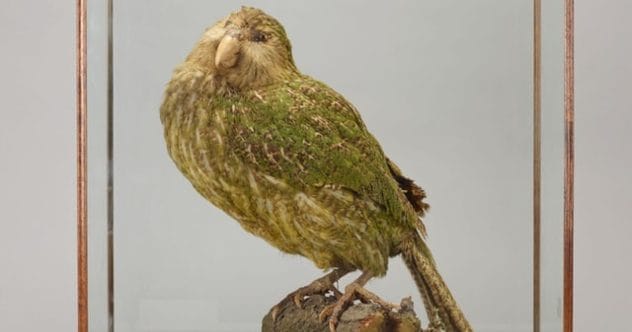Nature is a master of crafting incredible survivors. We’ve seen cockroaches that laugh in the face of decapitation and tiny tardigrades that can endure almost anything. But for every champion of evolution, there’s… well, a participant. Some creatures just seem to have missed the memo on ‘survival of the fittest.’ This list dives into ten of these zoological oddballs – animals whose survival strategies (or lack thereof) make you wonder how they’re still around!
10. Babirusas
When you think of tusks, you probably picture powerful tools for defense, digging, or showing off to mates. Useful, right? Well, the babirusa, a wild pig from Indonesia, seems to have a different idea. For male babirusas, their upper tusks are less of a survival tool and more of a slow, painful self-destruct button.
These tusks don’t stop growing. They curve upwards and then, bizarrely, back down towards the babirusa’s own head. If left unchecked, these tusks can actually pierce the pig’s skull, potentially stabbing its brain. It’s a built-in hazard that makes you seriously question their evolutionary path. Talk about a design flaw!
9. Some Sad, Sick Rats
Rats and mice are generally survival champs; just ask anyone who’s tried to get them out of their house! But when a tiny parasite called Toxoplasma gondii gets involved, these rodents basically turn into zombie snacks for cats. It’s a creepy tale of mind control.
This parasite wants to get into a cat’s system. So, when it infects a rat (often through cat feces, yuck!), it rewires the rat’s brain. Suddenly, the rat loses its natural fear of cat smells, especially urine. Even worse, they might become attracted to it! This makes the rat an easy meal for a cat, and the parasite continues its lifecycle. Not so smart for the rat, is it?
8. Steller’s Sea Cow
Manatees and dugongs are known for being gentle giants, but their extinct relative, the Steller’s Sea Cow, took ‘chill’ to a whole new, dangerous level. These massive 30-foot creatures were, sadly, too slow, too trusting, and apparently, too tasty for their own good.
Discovered by humans in 1741, they were hunted to extinction in just 27 years. A big part of the blame lies with overhunting, but the sea cows didn’t do themselves any favors. They were reportedly friendly, would approach boats, and had no real self-defense instincts. Their massive, blubbery bodies made them easy targets, leading to a quick disappearance from our planet. A truly sad story of a creature not equipped for human encounters.
7. Cheetahs
Cheetahs are famous for being the fastest land animals, sleek hunters of the savanna. But behind that speedy exterior lies a surprising fragility. Due to habitat loss and other pressures, their gene pool has shrunk dramatically, leading to inbreeding and health issues.
What’s really baffling is how hard they make it for scientists trying to help them. Captive breeding programs are essential for their survival, but cheetahs are notoriously difficult breeders in captivity. Females have unpredictable ovulation cycles, and both sexes often get too stressed to mate successfully. It’s a tough situation when a species seems to resist efforts to save it.
6. Kakapos
Ever heard of the kakapo? If not, it’s understandable. These large, flightless, nocturnal parrots from New Zealand are critically endangered, with only a couple hundred left. Their downfall? They’re just too sweet, a bit clueless, and practically defenseless.
Their main defense strategy is to freeze and hope their green feathers make them invisible. This worked okay against native predators but failed miserably against humans and introduced animals like dogs and stoats. They also breed very slowly, and males sometimes try to mate with anything roughly kakapo-sized and round, which isn’t helpful for increasing their numbers. These charmingly goofy birds definitely need all the help they can get.
5. Hymenopterans (Certain Ants, Bees, and Wasps)
This one’s a bit different. The order Hymenoptera includes ants, bees, and wasps – many of which live in highly organized colonies. In these societies, countless individuals, the workers, are essentially born to be expendable.
Many of these species exhibit eusociality, a complex social structure with reproductive queens and non-reproductive workers. These workers dedicate their lives to supporting the queen and the colony, performing all the hard labor. They have no chance to reproduce themselves and often face dangerous tasks with little regard for their own survival. While this strategy benefits the colony as a whole, individual workers have virtually zero self-preservation instincts when the colony’s needs are at stake.
4. Pandas
Ah, the panda. Cute, fluffy, and a symbol of conservation. But let’s be honest, they don’t make survival look easy. These bears are descended from carnivores, yet they stubbornly insist on a diet almost exclusively of bamboo, which their digestive systems aren’t well-equipped to handle.
This means they spend most of their day eating and digesting, often while sitting to conserve energy. On top of that, they are notoriously poor breeders. Getting two pandas in the mood at the same time is a challenge, and even when successful, panda mothers sometimes accidentally harm or abandon their tiny, fragile cubs. It often seems like pandas are their own worst enemy.
3. Octopuses
Octopuses are incredibly intelligent creatures. They can solve puzzles, change color, regenerate limbs – a true marvel of the ocean. But when it comes to reproduction, their strategy is tragically self-destructive. It’s like a bizarre, underwater soap opera.
Male octopuses use a specialized arm to deliver sperm to the female, and shortly after this romantic encounter, the male goes into a decline and dies. The female isn’t spared either. After laying her eggs, she dedicates herself to protecting and aerating them, refusing to eat. By the time the eggs hatch, she usually starves to death. Incredible dedication, yes, but a terrible long-term survival plan for the individuals.
2. Sloths
You knew sloths had to be on this list, right? They’re so famously slow that their name is literally one of the seven deadly sins! But it’s not just their leisurely pace or their algae-covered fur that earns them a spot. It’s their baffling bathroom habits.
Most tree-dwelling animals just let their droppings fall. Not sloths. Once a week, they make a slow, arduous journey down to the forest floor to dig a little hole, do their business, and cover it up. This ritual is incredibly risky. It uses up precious energy and leaves them completely vulnerable to predators on the ground. Why they do it is still a bit of a mystery to scientists, but it’s a clear example of poor survival choices.
1. Killdeer
Topping our list is the killdeer, a type of plover found across the Americas. These birds take parental devotion to a dangerously self-sacrificing extreme. While protecting their young is admirable, killdeer parents regularly put themselves in harm’s way with little regard for their own safety.
One famous tactic is the “broken-wing display.” If a predator approaches their nest, a parent killdeer will feign a broken wing, limping and crying out to draw the predator’s attention away from the chicks and towards itself. This often works, but it can also lead to the parent bird becoming lunch. Another strategy involves charging at much larger predators, a brave but often futile gesture. Their hearts are in the right place, but their survival instincts for themselves? Not so much.
Nature is full of wonders, and these animals, despite their questionable life choices, are a fascinating part of it. They remind us that evolution isn’t always about creating perfect survivors; sometimes, it’s just about being good enough to pass on your genes, even if by the skin of your teeth (or tusks, in some cases!).
What do you think? Which of these animals baffles you the most with their lack of survival skills? Share your thoughts in the comments below!










